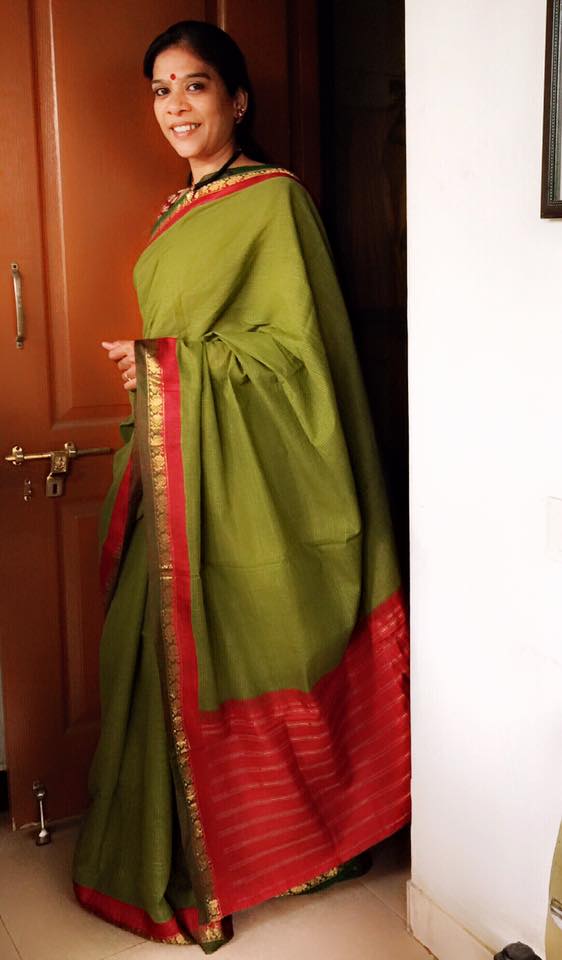Gorgeous Gadwals
The saree I am wearing is a 10 year old Gadwal, and picked up from Old Nalli – Chennai has the best of Gadwal collections and my mother used to wear these cotton gadwals regularly to her office; Her small but exclusive wardrobe was a walk in for us three sisters, and always a mix and match.
The one I am wearing, is a cotton saree with a silk border -The traditional colour is referred to as “Arappu” colour in Tamil. Arappu powder is used as a hair wash like reetha.
What I love about Gadwal sarees – is the right balance between silk and cotton -soft cotton in the body, silk in the border with lovely motifs. They say Chettinad saree bordes (in cotton) are heavily influenced by Gadwal borders. Another eyecatchy thing is the two tone borders, and in the upper portion, the zari starts only from the pleats portion (Mid way) and not in the inner tucking.
Gadwal is available in pure silk or cotton; and traced back to about 200 years ago, when the present township of Gadwal used to be a capital of a kingdom called “samasthanam”. Adhi Lakshmi Devamma, the Maharani of this kingdom promoted this craft, and since the entire production was centrered around this town it was called “Gadwal Sarees”.
Unqiue things about Gadwal –
Only handlooms are used for weaving Gadwal sarees, and human skill and labour are very important considerations for the finish of a saree – especially for joining of “Horizontal and vertical” borders.
There are two joints in a Gadwal saree – like a “Korvai” – The vertical joint joins the body of the saree and the border; the horizontal joint joins the body of the saree with the pallu. While the vertical interlocking is done on the loom, the horizontal locking in the pallu is done thread by thread. The weaver smears sticky gum on his thumb, takes a thread from body of the saree and another from the pallu and twists both, by a front and hack movement of thumb and index!

